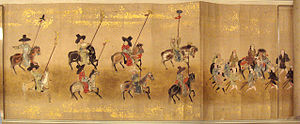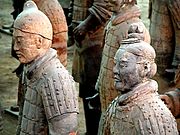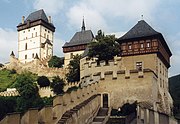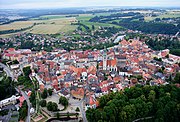Prior to the arrival of the Spanish, the island was inhabited by Native American peoples known as the Taíno and Ciboney whose ancestors had come from South and possibly North and Central America at least several and perhaps 60 to 80 centuries before. The Taíno were farmers and the Ciboney were farmers and hunter-gatherers; some have suggested that copper trade was significant and mainland artifacts have been found.
On October 12, 1492, Christopher Columbus landed near what is now Baracoa and claimed the island for Spain, and naming it Isla Juana after Prince Juan of Asturias. In 1511 the first Spanish settlement was founded by Diego Velázquez de Cuéllar at Baracoa; other towns including the future capital of the island San Cristobal de la Habana (founded in 1515) soon followed.
The Spanish enslaved the approximately 100,000 indigenous people who resisted conversion to Christianity, setting them primarily to the task of searching for gold, and within a century they had all but disappeared. Most scholars now believe that infectious disease was the overwhelming cause of the population decline of the indigenous people.
Cuba remained a Spanish possession for almost 400 years (1511–1898). Its economy was based on plantation agriculture, mining and the export of sugar, coffee and tobacco to Europe and later to North America. The small land-owning elite of Spanish-descended settlers held social and economic power, supported by a population of Spaniards born on the island (Criollos), other Europeans, and African-descended slaves.
In the 1820s, when the other parts of Spain's empire in Latin America rebelled and formed independent states, Cuba remained loyal, although there was some agitation for independence, leading the Spanish Crown to give it the motto "La Siempre Fidelísima Isla" (The Always Most Faithful Island). This loyalty was due partly to Cuban settlers' dependence on Spain for trade, protection from pirates, protection against a slave rebellion and partly because they feared the rising power of the United States more than they disliked Spanish rule.
Cuban independence from Spain was the motive for a rebellion in 1868 led by Carlos Manuel de Céspedes. This resulted in a prolonged conflict known as the Ten Years' War. The US declined to recognize the legitimacy of the Cuban government in arms, even though many European and Latin American nations had done so. In 1878 the Pact of Zanjón ended the conflict, with Spain promising greater autonomy to Cuba. In 1879-1880, Cuban patriot Calixto Garcia attempted to start another war, known as the Little War, but received little support.
Slavery was abolished in 1886, although the African-descended minority remained socially and economically oppressed. During this period rural poverty in Spain provoked by the Spanish Revolution of 1868 and its aftermath led to even greater Spanish emigration to Cuba. During the 1890s pro-independence agitation revived, fueled by resentment of the restrictions imposed on Cuban trade by Spain and hostility to Spain's increasingly oppressive and incompetent administration of Cuba. Few of Spain's promises for economic reform in the Pact of Zanjón were kept.
In April 1895 a new war was declared, led by the writer and poet José Martí, who had organized the war over 10 years, and proclaimed Cuba an independent republic — Martí was killed at Dos Rios shortly after landing in Cuba with the eastern expeditionary force. His death immortalized him and he has become Cuba's national hero. The 200,000 Spanish troops outnumbered a much smaller rebel army which relied mostly on guerrilla and sabotage tactics. The Spaniards began a campaign of suppression. General Valeriano Weyler, military governor of Cuba, herded the rural population into what he called reconcentrados, described by international observers as "fortified towns". These are often considered the prototype for 20th century concentration camps.Between 200,000 and 400,000 Cuban civilians died from starvation and disease during this period in the camps. These numbers were verified by the Red Cross and US Senator (and former Secretary of War) Redfield Proctor. US and European protests against Spanish conduct on the island followed.
As an outcome of the Spanish-American War, Spain ceded Cuba, along with Puerto Rico, the Philippines, and Guam to the US under the 1898 Treaty of Paris.
Theodore Roosevelt, who had fought in the Spanish-American War and had some sympathies with the independence movement, succeeded McKinley as President of the United States in 1901 and abandoned the 20-year treaty proposal. Instead, the Republic of Cuba gained formal independence from the United States of America on May 20, 1902. Under the new Cuban constitution, however, the US retained the right to intervene in Cuban affairs and to supervise its finances and foreign relations. Under the Platt Amendment, Cuba also agreed to lease to the US the naval base at Guantánamo Bay.
In 1906, following disputed elections, an armed revolt led by Independence War Veterans defeated the meager government forces loyal to its first president, Tomás Estrada Palma and the US intervened. The country was placed under US occupation and a US governor, Charles Edward Magoon, took charge for three years. Magoon's governorship in Cuba was viewed in a negative light by many Cuban historians for years thereafter, believing that much political corruption was introduced during Magoon's years as governor. In 1908 self-government was restored when José Miguel Gómez was elected President, but the US continued its intervention of Cuban affairs.
In 1912 Partido Independiente de Color attempted to establish a separate black republic in Oriente Province. Perhaps because the group lacked sufficient weaponry, the main tactic was to set businesses and private residences on fire. The movement was a failure and General Monteagudo suppressed the rebels with considerable bloodshed.
Cuba shipped considerable quantities of sugar to Britain, avoiding U-boat attack, by the subterfuge of shipping sugar to Sweden. The Menocal government declared war on Germany very soon after the US did.
Despite frequent outbreaks of disorder, constitutional government was maintained until 1930, when Gerardo Machado y Morales suspended the constitution. During Machado's tenure, a nationalistic economic program was pursued with several major national development projects undertaken (see Infrastructure of Cuba. Carretera Central and El Capitolio).
Machado's hold on power was weakened following a decline in demand for exported agricultural produce due to the Great Depression, and to attacks first by War of Independence veterans, and later by covert terrorist organizations, principally the ABC.
During a general strike in which the communist party took the side of Machado the senior elements of the Cuban army forced Machado into exile and installed Carlos Manuel de Céspedes y Quesada, son of Cuba's founding father (Carlos Manuel de Céspedes), as President. During September 4-5, 1933 a second coup overthrew Céspedes, leading to the formation of the first Ramón Grau San Martín government. Notable events in this violent period include the separate sieges of Hotel Nacional and Atares Castle (see Blas Hernandez). This government lasted 100 days but engineered radical socialistic changes in Cuban society and a rejection of the Platt amendment. In 1934 Fulgencio Batista and the army replaced Grau with Carlos Mendieta y Montefur.
In 1940, Cuba had free elections. In 1940 Batista, endorsed by the Communist Party of Cuba, was elected President and his administration carried out major social reforms. Several members of the Communist Party held office under his administration. Batista's administration formally took Cuba to the Allies of World War II camp in the World War II, declaring war on Japan on December 9, 1941, then on Germany and Italy on December 11, 1941. Cuba was not greatly involved in combat during World War II.
Ramón Grau won 1944 elections. Carlos Prío Socarrás won 1948 elections. The influx of investment fueled a boom which did much to raise living standards across the board and create a prosperous middle class in most urban areas, although the gap between rich and poor became wider and more obvious.
The 1952 election was a three-way race. Roberto Agramonte of the Ortodoxos party led in all the polls, followed by Dr Aurelio Hevia of the Auténtico party, and running a distant third was Batista, seeking a return to office. Both Agramonte and Hevia had decided to name Col. Ramón Barquín to head the Cuban armed forces after the elections. Barquín, then a diplomat in Washington, DC, was a top officer who commanded the respect of the professional army and had promised to eliminate corruption in the ranks. Batista feared that Barquín would oust him and his followers, and when it became apparent that Batista had little chance of winning, he staged a coup on March 10, 1952 and held power with the backing of a nationalist section of the army as a “provisional president” for the next two years. Justo Carrillo told Barquín in Washington in March 1952 that the inner circles knew that Batista had aimed the coup at him; they immediately began to conspire to oust Batista and restore democracy and civilian government in what was later dubbed La Conspiracion de los Puros de 1956 (Agrupacion Montecristi). In 1954 Batista agreed to elections. The Partido Auténtico put forward ex-President Grau as their candidate, but he withdrew amid allegations that Batista was rigging the elections in advance.
In April 1956 Batista had given the orders for Barquín to become General and chief of the army. But Barquin decided to move forward with his coup and secure total power. On April 4, 1956 a coup by hundreds of career officers led by Col. Barquín was frustrated by Rios Morejon. The coup broke the backbone of the Cuban armed forces. The officers were sentenced to the maximum terms allowed by Cuban Martial Law. Barquín was sentenced to solitary confinement for eight years. La Conspiración de los Puros resulted in the imprisonment of the commanders of the armed forces and the closing of the military academies.
Cuba had the Latin America's highest per capita consumption rates of meat, vegetables, cereals, automobiles, telephones and radios. Gross domestic product per capita had been approximately equal to Italy and significantly higher than that of Japan. Cuban's workers enjoyed some of the highest wages in the world. Cuba attracted more immigrants, primarily from Europe, as a percentage of population than the US The United Nations noted Cuba for its large middle class. On the other hand, Cuba was affected by perhaps the largest labor union privileges in Latin America, including bans on dismissals and mechanization. They were obtained in large measure "at the cost of the unemployed and the peasants", leading to disparities. Between 1933 and 1958, Cuba extended economic regulations enormously, causing economic problems. Unemployment became relatively large; graduates entering the workforce could not find jobs. The middle class, which compared Cuba to the United States, became increasingly dissatisfied with the unemployment, while labor unions supported Batista until the very end.
The United States government imposed an arms embargo on the Cuban government on March 14, 1958. On December 2, 1956 a party of 82 people, led by Fidel Castro, had landed with the intention of establishing an armed resistance movement in the Sierra Maestra. By late 1958 they had broken out of the Sierra Maestra and launched a general insurrection, joined by various people. When the group captured Santa Clara, Batista fled the country to exile in Portugal. Barquín negotiated the symbolic change of command between Camilo Cienfuegos, Che Guevara, Raul Castro and his brother Fidel Castro, after the Supreme Court decided that the Revolution was the source of law and its representative should assume command. Castro's forces entered the capital on January 8, 1959. Shortly afterwards Dr Manuel Urrutia Lleó assumed power, but exiled to the United States after Fidel Castro attacked him.
Fidel Castro became prime minister of Cuba in February 1959. In its first year, the new revolutionary government expropriated private property with little or no compensation, nationalised public utilities, tightened controls on the private sector and closed down the mafia-controlled gambling industry.
Some of these measures were undertaken by Fidel Castro's government in the name of the program outlined in the Manifesto of the Sierra Maestra, while in the Sierra Maestra. The government nationalized private property totaling about $25 billion US dollars, out of which American property made up only over US $1.0 billions.
By the end of 1960, all opposition newspapers had been closed down, and all radio and television stations were in state control. Moderates, teachers and professors were purged. In any year, about 20,000 dissenters were held and tortured under inhuman prison conditions. Groups such as homosexuals were locked up in internment camps in the 1960s, where they were subject to medical-political "re-education". One estimate is that 15,000 to 17,000 people were executed. The Communist Party strengthened its one-party rule, with Castro as supreme leader.Fidel's brother, Raul Castro, became the army chief. Loyalty to Castro became the primary criteria for all appointments.In September 1960, the regime created a system known as Committees for the Defense of the Revolution (CDR), which provided neighborhood spying. In the 1961 New Year's Day parade, the administration exhibited Soviet tanks and other weapons. Eventually, the tiny island nation built up the second largest armed forces in Latin America, second only to Brazil. Cuba became a privileged client-state of the Soviet Union.
By 1961, hundreds of thousands of Cubans had left for the United States. In 1961, John F. Kennedy became President of the United States. He directed the CIA to conduct the Bay of Pigs invasion using the CIA's elite Special Activities Division and Cuban exiles to restore multiparty democracy in Cuba, with professor and the first post-revolution Prime Minister José Miró Cardona serving as provisional head of state. However, Kennedy denied American troops and other direct involvement, and the plan failed. This was followed the Cuban Missile Crisis of 1962. The Kennedy administration demanded the immediate withdrawal of missiles placed in Cuba by the USSR, which was a response to US nuclear missiles placed in Turkey and the Middle East. The USSR made an agreement with Kennedy in which all missiles were to be withdrawn from Cuba and the US would secretly remove its missiles from Turkey and elsewhere in the Middle East within a few months. Kennedy also agreed not to invade Cuba in the future. In the aftermath of the Cuban Missile Crisis, Cuban exiles captured at the Bay of Pigs were exchanged for a shipment of supplies from the US. By 1963, Castro moved Cuba towards a full-fledged Communist system modeled on the USSR. The US imposed a complete diplomatic and commercial embargo on Cuba, and began Operation Mongoose.
In 1965, Castro merged his revolutionary organizations with the Communist Party, of which he became First Secretary, and Blas Roca became Second Secretary. Roca was succeeded by Raúl Castro, who, as Defense Minister and Fidel's closest confidant, became and has remained the second most powerful figure in the government. Raúl's position was strengthened by the departure of Che Guevara to launch unsuccessful attempts at insurrectionary movements in the Democratic Republic of Congo, and then Bolivia, where he was killed in 1967.
During the 1970s, Castro dispatched tens of thousands troops to assist the MPLA in Angola and the leader Mengistu Haile Mariam in Ethiopia.
By the 1970s, the standard of living was "extremely spartan" and discontent was rife. Fidel Castro admitted the failures of economic policies in a 1970 speech. By the mid-1970s, Castro started economic reforms. The regime dispatched troops to fight Soviet-supported wars in Africa. Cuba had been expelled from the Organization of American States in 1962 and supported the embargo, but in 1975 the OAS lifted all sanctions against Cuba and both Mexico and Canada broke ranks with the US by developing closer relations with Cuba.
Although officially expelled, on paper, Cuba continued the 35th member state of OAS. On June 3, 2009, the OAS adopted a resolution to end their 47-year exclusion of Cuba. However, this remains a contentious subject for several of the nations involved. United States Secretary of State Hillary Rodham Clinton walked out of the OAS meeting in protest as the resolution was being drafted, and Cuban leaders have repeatedly announced they are not interested in rejoining the OAS. As of 2002, some 1.2 million persons of Cuban background (about 10% of the current population of Cuba) resided in the US, Many of these persons had left the island for the US, often by sea in small boats and fragile rafts. In particular, on Sunday, April 6, 1980, 10,000 Cubans stormed the Peruvian embassy in Havana seeking political asylum. The following day, the Cuban government granted permission for the emigration of Cubans seeking refuge in the Peruvian embassy. On April 16, 500 Cuban citizens left the Peruvian Embassy for Costa Rica. On April 21, many of those Cubans started arriving in Miami via private boats and were halted by the US State Department on April 23. But the emigration continued, because Castro allowed anyone who desired to leave the country to do so through the port of Mariel; this emigration became known as the Mariel boatlift. Over 125,000 Cubans emigrated to the US before the flow of vessels ended on June 15.
Castro's rule was severely tested by the aftermath of the Soviet collapse (a time known in Cuba as the Special Period). The food shortages were similar to North Korea; priority was given to the elite classes and the military, while ordinary people had little to eat. The regime did not accept American donations of food, medicines and cash until 1993.
The People's Republic of China emerged as a new source of aid and support. Cuba also found new allies in President Hugo Chávez of Venezuela and President Evo Morales of Bolivia, both major oil and gas exporters.
In 2003, the regime crushed dissidents in events known as the "Black Spring", throwing dozens in prisons.
On July 31, 2006 Fidel Castro delegated his major duties to his brother, First Vice President, Raúl Castro. This transfer of duties was described as temporary while Fidel Castro recovered from surgery undergone after suffering from an "acute intestinal crisis with sustained bleeding". Castro was too ill to attend the nationwide commemoration of the 50th anniversary of the Granma boat landing on December 2, 2006, which fueled speculation that Castro had stomach cancer, though Spanish doctor Dr. García Sabrido stated that his illness was a digestive problem and not terminal, after an examination of the subject on Christmas Day.
In January 2008, footage of Castro meeting Venezuelan president Hugo Chávez was broadcast, in which Castro "appeared frail but stronger than three months ago". In February, 2008 Castro announced that he was resigning as President of Cuba.On February 24, 2008 Raúl Castro was elected the new President. In his acceptance speech, Raúl Castro promised that some of the restrictions that limit Cubans' daily lives would be removed. In March 2009, Raúl Castro purged some of Fidel's officials.






























